Dutch Lab Breeds 100% Fatal Mutant Bird Flu That Spreads Between Mammals: 'Journal of General Virology'
Engineered strain spread between ferrets, caused brain damage, and led to fatal organ failure, study shows.
A government-funded lab in the Netherlands has created what researchers label a mutant strain of H5N1 bird flu virus, capable of spreading between mammals and causing 100% mortality under tightly controlled laboratory conditions, according to a new peer-reviewed study published Tuesday in the Journal of General Virology.
The findings add to the long list of instances of international pandemic instigation and coordination (see list below this article).
Follow us on Instagram @realjonfleetwood & Twitter/X @JonMFleetwood.
If you value this reporting, consider upgrading to a paid subscription.
The new experiment was conducted at Wageningen Bioveterinary Research (WBVR) using what the study describes as “three HPAI H5N1 viruses” that “belonged to H5 clade 2.3.4.4b.”
WBVR receives funding from the Coalition for Epidemic Preparedness Innovations (CEPI), which is funded by The Gates Foundation and was founded by the World Economic Forum (WEF).
The newly engineered viral constructs were derived from a red fox brain and amplified in embryonated chicken eggs.
They were introduced to ferrets either directly through nasal dosing or indirectly via housing alongside dosed animals.
All infected animals died.
“All inoculated ferrets from group B or C which were scheduled for necropsy on 14 DPI reached the HEP between 4 and 5 DPI. All three contact transmission ferrets (group D) reached the HEP on 7 DPI,” the study states.
The term “HEP,” or humane endpoint, refers to a lab-defined threshold of observable distress, including signs such as breathing difficulty and neurological tremors.
Animals reaching HEP were euthanized in accordance with protocol, following exposure to the material labeled as H5N1.
“HEPs were applied when the following criteria were met: a combined score of 4 for depression, breathing (dyspnoea) and neurological signs (e.g. tremors)... All animals that reached the HEP were euthanized and necropsied immediately.”
The researchers concluded that severe symptoms were driven by tissue inflammation across multiple organs.
“In most ferrets from groups B, C and D, severe disease leading to HEP was caused by a combination of moderate to severe necrotizing pancreatitis, hepatitis and encephalitis.”
Whether the observed deterioration resulted solely from the viral construct or from the experimental delivery mechanism and stress environment is not explored in the study.
Transmission Observed Under Experimental Conditions
According to the researchers, the material carrying the PB2-E627K mutation—widely associated in virology literature with adaptation to mammalian cells—was responsible for triggering symptoms in both directly dosed animals and those housed in contact with them.
“Transmission to co-housed ferrets was investigated in a group setting for the virus carrying the PB2-E627K mutation and caused neurological signs accompanied by prominent viral antigen staining in recipient ferrets compared to directly inoculated ferrets.”
“Ferrets infected with H5N1-2021 PB2-627K via direct contact transmission exhibited more pronounced neurological signs accompanied by expression of viral antigen in the olfactory bulb and cerebrum.”
The construct appeared to accumulate in brain tissue and digestive-associated neural networks.
Researchers reported:
“Neuronal viral protein staining was detected in the olfactory bulb, trigeminal ganglion, cerebrum, cerebellum and neurons of the duodenal plexus.”
Still, the study does not evaluate whether these symptoms arose from the engineered sequence alone or from the host’s biological response to an abnormal exposure route.
Mutation Emerged In Vivo
In one case, the PB2-E627K mutation appeared during the process of what researchers describe as viral replication inside a host.
“One ferret (#11) showed a majority virus population of 87.61% with the PB2-E627K mutation in the liver and a minority virus population of 1.06% with the PB2-E627K mutation in the lung.”
Researchers did not address whether such mutations arise spontaneously in all biological contexts or are specific to the forced experimental exposure paradigm.
Construct Linked to Multi-Organ Inflammation
In addition to brain inflammation, widespread organ damage was reported in animals subjected to the viral material.
“[V]iral antigen expression was most prominent in nasal conchae, liver and pancreas” and was “expressed in neurons and microglia cells.”
The damage followed what the study describes as inoculation with a dose of “10^6 EID50 per millilitre,” a viral concentration unlikely to be encountered in natural settings.
Some analysts argue that the study results reflect a systemic inflammatory reaction triggered by artificial conditions rather than a contagious disease model, although the authors did not comment on this possibility.
Authors Warn of Zoonotic Spillover
Despite the artificial context of exposure, the study’s authors stated:
“Transmission between mammals was shown... which underlines the zoonotic potential of current HPAI H5N1 viruses.”
The research was carried out at Wageningen Bioveterinary Research and supported by the Dutch Ministry of Agriculture, Nature and Food Quality (project numbers WOT-01-003-112, WOT-01-003-096, and KB-37-003-039).
All procedures were conducted inside biosafety level 3 (BSL-3) containment.
“Animal and laboratory work was performed in human biosafety level 3 laboratories (hBSL3) at Wageningen Bioveterinary Research, Lelystad (WBVR), The Netherlands.”
Whether the construct labeled H5N1 would produce the same outcome in naturally occurring, unstressed mammalian environments remains a matter of interpretation—regardless of one’s view on viral causation.
At its core, the study highlights a growing concern: that governments are not merely preparing for the next pandemic—they are actively engineering the very constructs they claim necessitate mass vaccination, emergency powers, and sweeping lockdowns.
Congress, the White House, the Department of Energy, the FBI, and the CIA have acknowledged that a lab-related incident involving gain-of-function research linked to WIV is most likely the origin of the COVID-19 pandemic, raising concerns that ongoing experiments like these could trigger another one.
See articles below demonstrating internationally coordinated bird flu pandemic instigation.
Follow us on Instagram @realjonfleetwood & Twitter/X @JonMFleetwood.
If you value this reporting, consider upgrading to a paid subscription.
For advertising & sponsorship opportunities reaching 230,000+ monthly viewers, contact us by clicking below.






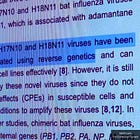

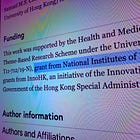







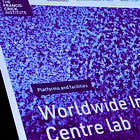



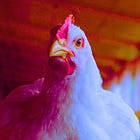



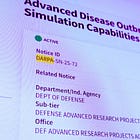

The Bioweapons Treaty of 1975 bans development of these biological weapons EXCEPT for the purposes of producing prophylactic or protective vaccines. The exception is how they get away with this dangerous research. Funders are convinced that putting parts of the dangerous pathogens they've created (or the mRNA message to make these parts) into people by injection will prevent the infection and/or protect against severe disease. There is no prophylaxis in injectable vaccines as they cannot provide mucosal immunity at epithelial barriers, only serum antibodies that react to the infection after it happens. Nor is there protection of severe disease symptoms because the serum antibodies are too specific, become suboptimal, and end up worsening the symptoms through antibody dependent enhancement mechanisms over time. The exception in the treaty makes no sense and should be removed, and the labs should be closed.
With respect to the 🇺🇸founders and funders of this work, we honor their ingenuity and investment in powerful innovation, hereby nominating them - Bill Gates, all CEPI, Gavi, and Eco Health Alliance personal, Dr Fauci, and Dr Collins, for humanity awards and the privilege of being the lead volunteers in the first human preclinical trials, controlled lab exposures and translational investigations.
🤡😷